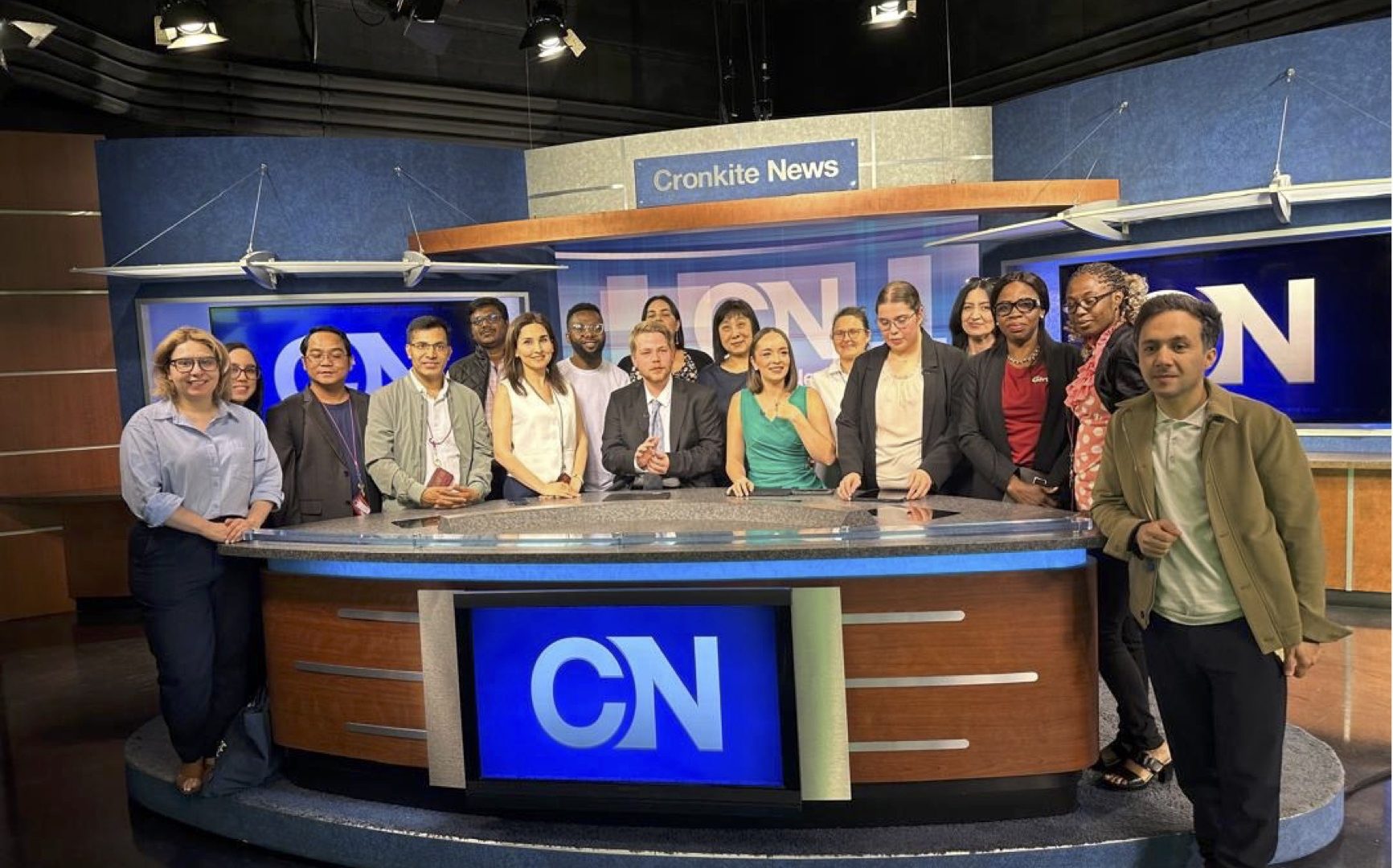A home away from home
On June 2, 18 scholars who were invited to participate in the 2024 SUSI Scholars Program entered the airspace of the United States from all over the world. After transferring from San Francisco, Houston, Detroit, Chicago, Newark and JFK New York, Charlotte, Los Angeles, Boston, Salt Lake City, and Atlanta, they finally arrived in Phoenix. Having traveled for over 20 hours, their spirits remained high as they were thrilled to finally meet at ASU after waiting for several months.
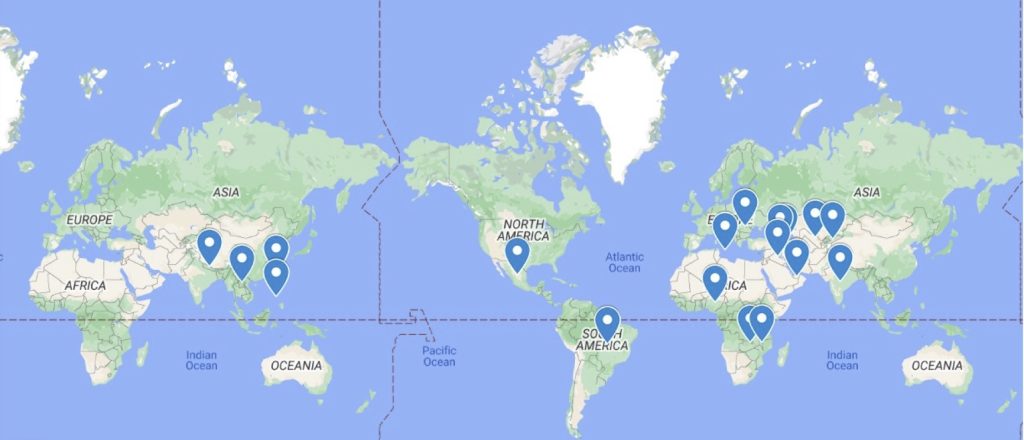
The 2024 SUSI scholars were warmly greeted on their first day by Associate Professor and Assistant Dean for Research Dr. Dawn Gilpin, Program Coordinator Ms. Kate Devine, and other staff members at Arizona State University’s Walter Cronkite School of Journalism & Mass Communication. At their first meeting, scholars were like old friends reuniting, rather than strangers. It was as though they had a long-standing connection from the start. What a wonderful moment! This long trip takes them far from home, yet they hold the belief that it intertwines them with a destiny that transcends time, binding all participants together indefinitely.
ASU’s teaching hospital model in journalism and communication practice
ASU is highly renowned in the United States for integrating theory and practice, and especially for its innovative use of the teaching hospital model in the field of communication studies.
On the first and second days, the SUSI scholars were guided to visit several media centers at the Cronkite School, such as Cronkite News, News 21, and the Cronkite Agency. Notably, they had the opportunity to observe the rehearsal and taping of a Cronkite News newscast. The professional performance of these student anchors impressed all of the scholars.
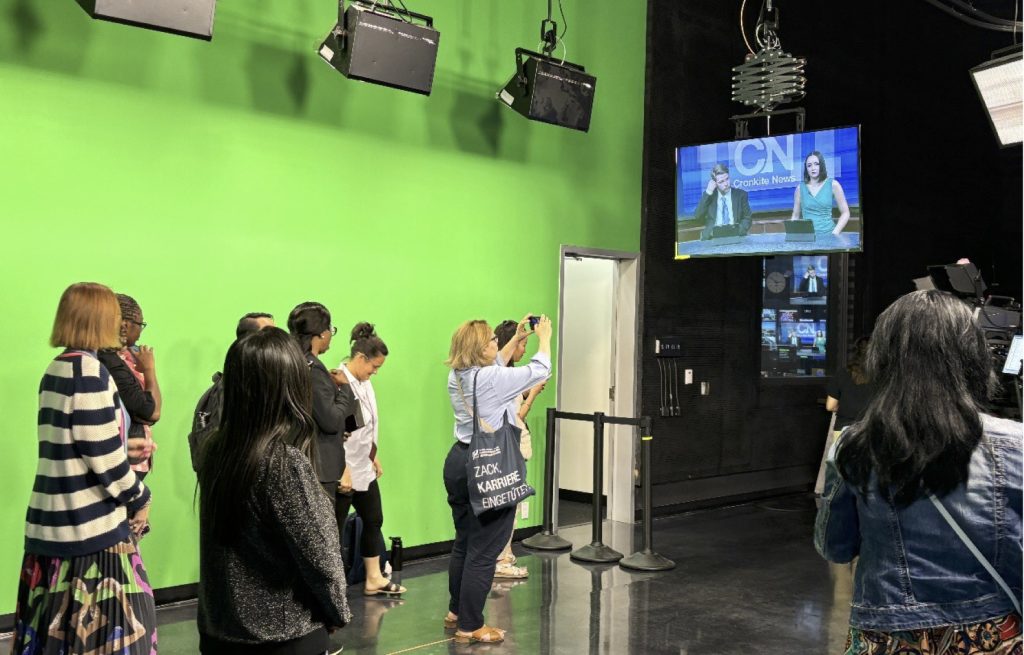
Today, the schedule for the 2024 SUSI scholars included two parts: first, observing the pre-departure interview meeting of News21 for the presidential election campaign; secondly, gaining insights into the curriculum designs of within ASU Cronkite School, both bachelor and master’s degrees, particularly the capstone practical training design related to the teaching hospital model in practice.
What is the “teaching hospital model”?
Because the teaching hospital model represents the core philosophy of Cronkite’s capstone program, it is crucial to grasp its essence.
The foundation of employing a teaching hospital for journalism education is based on the timeless principle that people learn by doing. This educational philosophy was proposed by Eric Newton, the senior adviser to the president of the Knight Foundation when he spoke to Dutch educators at a conference. Newton has provided a definition of the teaching hospital model: “A model of learning-by-doing that includes college students, professors and professionals working together under one “digital roof” for the benefit of a community.”[1]
Newton believed that medicine, along with the teaching hospital model, presents immense opportunities for journalism education, as both are deeply connected to the community, mirroring the ethos of many news organizations. To replicate a teaching hospital environment, a university-based community news organization would need to incorporate six specific elements into a unified endeavor:[2][3]
- Students doing the journalism;
- Professionals mentoring them to improve the quality and impact of the journalism;
- Professors bringing in topic knowledge and raising issues;
- Innovators pioneering new tools and techniques;
- Academics doing major research projects;
- Everyone working together with an emphasis of not just informing a community but also engaging it. The sixth element is not a type of person, it is a way of doing things: working with each other and with a community.
Learning by doing: Observation of the News21 meeting
Although News 21 only operates during the summer vacation by design, and is a fellowship program rather than a capstone, it also fully manifests the learning-by-doing spirit of the teaching hospital model. This news team, which makes up the award-winning Carnegie-Knight News21 fellowship recipients from institutions across the United States, undergoes 10 weeks of intensive news training at ASU during the summer following an intensive semester-long preparatory course. This weekend, they will head into the field to report news stories about the 2024 U.S. presidential election campaigns. At the pre-departure meeting, the director of the news center told the students that journalist safety was a top priority and explained during the meeting how they should and could protect themselves throughout the interview process.
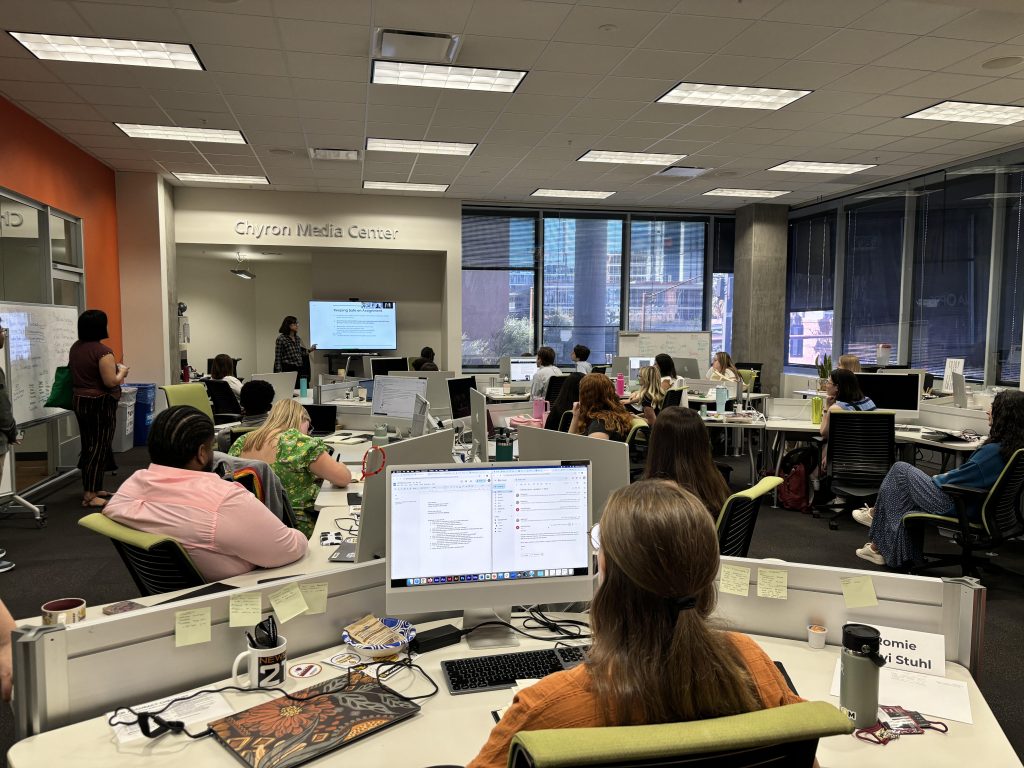
Following the pre-departure meeting, Executive Director Pauline Arrillaga engaged in a discussion with SUSI scholars. Communication scholars from diverse countries posed inquiries on the operations, structure, and budgeting of News 21 during the session.
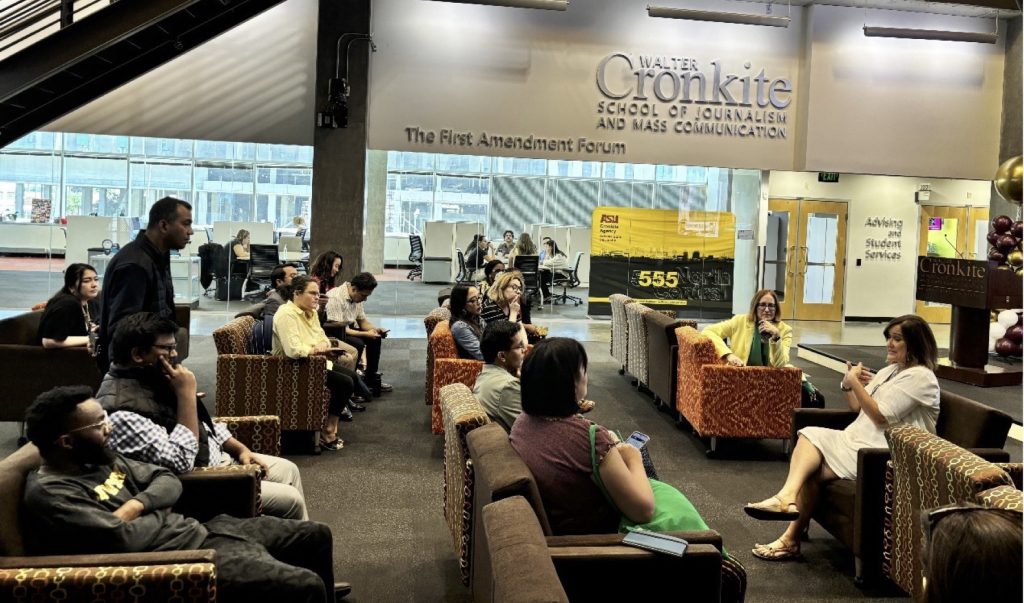
The extensive discussion proved invaluable for the 2024 SUSI scholars, providing them with valuable insights that they could bring back to their respective countries and implement in journalism and communication education.
[1] WAN-IFRA staff (2013). Journalism education and the ‘teaching hospital model’, retrieved from World Association of News Publishers https://wan-ifra.org/2013/12/journalism-education-and-the-teaching-hospital-model/
[2] Newton, E. The ‘teaching hospital’: A goal for journalism education https://knightfoundation.org/speeches/teaching-hospital-goal-journalism-education, The New America Foundation and the John S. and James L. Knight Foundation.
[3] Anderson, C.W., Smith, J., Rothfeld, M., Glaisyer, T. (2011). Shaping 21st Century Journalism: Leveraging a ‘teaching hospital model’ in journalism education.
